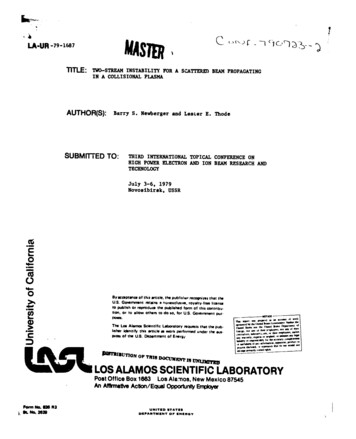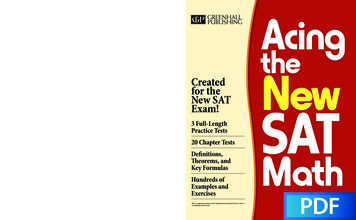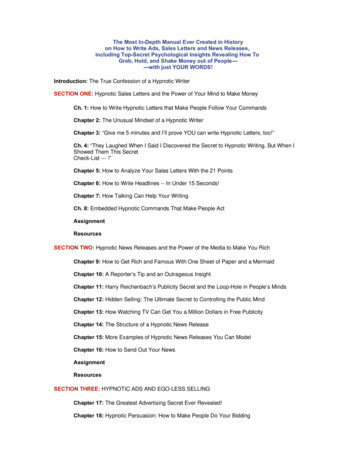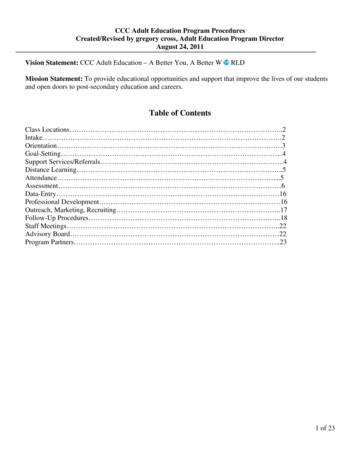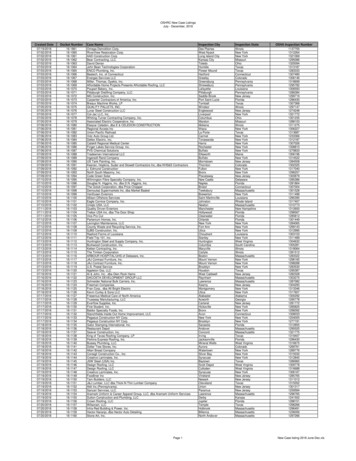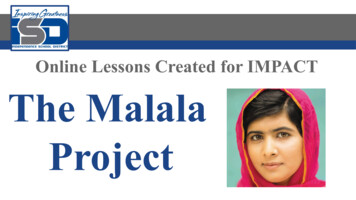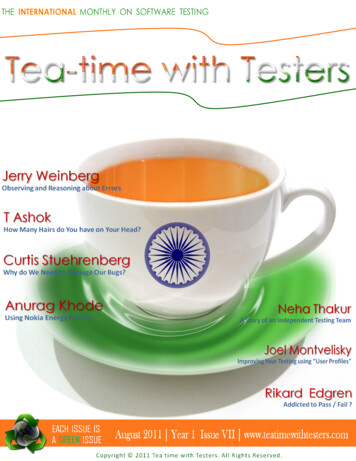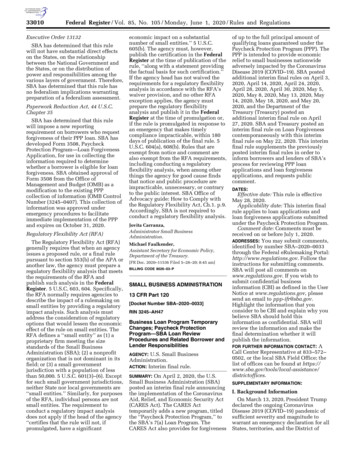
Transcription
CREATED BY JUTOH - PLEASE REGISTER TO REMOVE THIS LINETHEKAMA SUTRAOFVATSYAYANA.In Seven Parts,
PREFACE.In the literature of all countries there will be found a certain number of works treating especially oflove. Everywhere the subject is dealt with differently, and from various points of view. In the presentpublication it is proposed to give a complete translation of what is considered the standard work onlove in Sanscrit literature, and which is called the 'Vatsyayana Kama Sutra,' or Aphorisms on Love,by Vatsyayana.While the introduction will bear with the evidence concerning the date of the writing, and thecommentaries written upon it, the chapters following the introduction will give a translation of thework itself. It is, however, advisable to furnish here a brief analysis of works of the same nature,prepared by authors who lived and wrote years after Vatsya had passed away, but who stillconsidered him as a great authority, and always quoted him as the chief guide to Hindoo eroticliterature.Besides the treatise of Vatsyayana the following works on the same subject are procurable in India:—The Ratirahasya, or secrets of love.The Panchasakya, or the five arrows.The Smara Pradipa, or the light of love.The Ratimanjari, or the garland of love.The Rasmanjari, or the sprout of love.The Anunga Runga, or the stage of love; also called Kamaledhiplava, or a boat in the ocean of love.The author of the 'Secrets of Love' (No. 1) was a poet named Kukkoka. He composed his work toplease one Venudutta, who was perhaps a king. When writing his own name at the end of each chapterhe calls himself "Siddha patiya pandita," i.e., an ingenious man among learned men. The work wastranslated into Hindi years ago, and in this the author's name was written as Koka. And as the samename crept into all the translations into other languages in India, the book became generally known,and the subject was popularly called Koka Shastra, or doctrines of Koka, which is identical with theKama Shastra, or doctrines of love, and the words Koka Shastra and Kama Shastra are usedindiscriminately.The work contains nearly eight hundred verses, and is divided into ten chapters, which are calledcalled Pachivedas. Some of the things treated of in this work are not to be found in the Vatsyayana,such as the four classes of women, viz., the Padmini, Chitrini, Shankini and Hastini, as also theenumeration of the days and hours on which the women of the different classes become subject tolove. The author adds that he wrote these things from the opinions of Gonikaputra andNandikeshwara, both of whom are mentioned by Vatsyayana, but their works are not now extant. It isdifficult to give any approximate idea as to the year in which the work was composed. It is only to bepresumed that it was written after that of Vatsyayana, and previous to the other works on this subjectthat are still extant. Vatsyayana gives the names of ten authors on the subject, all of whose works he
had consulted, but none of which are extant, and does not mention this one. This would tend to showthat Kukkoka wrote after Vatsya, otherwise Vatsya would assuredly have mentioned him as an authorin this branch of literature along with the others.The author of the 'Five Arrows' (No. 2 in the list) was one Jyotirisha. He is called the chief ornamentof poets, the treasure of the sixty-four arts, and the best teacher of the rules of music. He says that hecomposed the work after reflecting on the aphorisms of love as revealed by the gods, and studying theopinions of Gonikaputra, Muladeva, Babhravya, Ramtideva, Nundikeshwara and Kshemandra. It isimpossible to say whether he had perused all the works of these authors, or had only heard aboutthem; anyhow, none of them appear to be in existence now. This work contains nearly six hundredverses, and is divided into five chapters, called Sayakas or Arrows.The author of the 'Light of Love' (No. 3) was the poet Gunakara, the son of Vechapati. The workcontains four hundred verses, and gives only a short account of the doctrines of love, dealing morewith other matters.'The Garland of Love' (No. 4) is the work of the famous poet Jayadeva, who said about himself thathe is a writer on all subjects. This treatise is, however, very short, containing only one hundred andtwenty-five verses.The author of the 'Sprout of Love' (No. 5) was a poet called Bhanudatta. It appears from the last verseof the manuscript that he was a resident of the province of Tirhoot, the son of a Brahman namedGaneshwar, who was also a poet. The work, written in Sanscrit, gives the descriptions of differentclasses of men and women, their classes being made out from their age, description, conduct, etc. Itcontains three chapters, and its date is not known, and cannot be ascertained.'The Stage of Love' (No. 6) was composed by the poet Kullianmull, for the amusement of Ladkhan,the son of Ahmed Lodi, the same Ladkhan being in some places spoken of as Ladana Mull, and inothers as Ladanaballa. He is supposed to have been a relation or connection of the house of Lodi,which reigned in Hindostan from A.D. 1450-1526. The work would, therefore, have been written inthe fifteenth or sixteenth century. It contains ten chapters, and has been translated into English, butonly six copies were printed for private circulation. This is supposed to be the latest of the Sanscritworks on the subject, and the ideas in it were evidently taken from previous writings of the samenature.The contents of these works are in themselves a literary curiosity. There are to be found both inSanscrit poetry and in the Sanscrit drama a certain amount of poetical sentiment and romance, whichhave, in every country and in every language, thrown an immortal halo round the subject. But here it istreated in a plain, simple, matter of fact sort of way. Men and women are divided into classes anddivisions in the same way that Buffon and other writers on natural history have classified and dividedthe animal world. As Venus was represented by the Greeks to stand forth as the type of the beauty ofwoman, so the Hindoos describe the Padmini or Lotus woman as the type of most perfect feminineexcellence, as follows:She in whom the following signs and symptoms appear is called a Padmini. Her face is pleasing asthe full moon; her body, well clothed with flesh, is soft as the Shiras or mustard flower, her skin isfine, tender and fair as the yellow lotus, never dark coloured. Her eyes are bright and beautiful as theorbs of the fawn, well cut, and with reddish corners. Her bosom is hard, full and high; she has a good
neck; her nose is straight and lovely, and three folds or wrinkles cross her middle—about theumbilical region. Her yoni resembles the opening lotus bud, and her love seed (Kama salila) isperfumed like the lily that has newly burst. She walks with swan-like gait, and her voice is low andmusical as the note of the Kokila bird, she delights in white raiments, in fine jewels, and in richdresses. She eats little, sleeps lightly, and being as respectful and religious as she is clever andcourteous, she is ever anxious to worship the gods, and to enjoy the conversation of Brahmans. Such,then, is the Padmini or Lotus woman.Detailed descriptions then follow of the Chitrini or Art woman; the Shankhini or Conch woman, andthe Hastini or Elephant woman, their days of enjoyment, their various seats of passion, the manner inwhich they should be manipulated and treated in sexual intercourse, along with the characteristics ofthe men and women of the various countries in Hindostan. The details are so numerous, and thesubjects so seriously dealt with, and at such length, that neither time nor space will permit of theirbeing given here.One work in the English language is somewhat similar to these works of the Hindoos. It is called'Kalogynomia: or the Laws of Female Beauty,' being the elementary principles of that science, by T.Bell, M.D., with twenty-four plates, and printed in London in 1821. It treats of Beauty, of Love, ofSexual Intercourse, of the Laws regulating that Intercourse, of Monogamy and Polygamy, ofProstitution, of Infidelity, ending with a catalogue raisonnée of the defects of female beauty.Other works in English also enter into great details of private and domestic life. 'The Elements ofSocial Science, or Physical, Sexual and Natural Religion,' by a Doctor of Medicine, London, 1880,and 'Every Woman's Book,' by Dr. Waters, 1826. To persons interested in the above subjects theseworks will be found to contain such details as have been seldom before published, and which oughtto be thoroughly understood by all philanthropists and benefactors of society.After a perusal of the Hindoo work, and of the English books above mentioned, the reader willunderstand the subject, at all events from a materialistic, realistic and practical point of view. If allscience is founded more or less on a stratum of facts, there can be no harm in making known tomankind generally certain matters intimately connected with their private, domestic, and social life.Alas! complete ignorance of them has unfortunately wrecked many a man and many a woman, while alittle knowledge of a subject generally ignored by the masses would have enabled numbers of peopleto have understood many things which they believed to be quite incomprehensible, or which were notthought worthy of their consideration.
INTRODUCTION.It may be interesting to some persons to learn how it came about that Vatsyayana was first brought tolight and translated into the English language. It happened thus. While translating with the pundits the'Anunga runga, or the stage of love,' reference was frequently found to be made to one Vatsya. Thesage Vatsya was of this opinion, or of that opinion. The sage Vatsya said this, and so on. Naturallyquestions were asked who the sage was, and the pundits replied that Vatsya was the author of thestandard work on love in Sanscrit literature, that no Sanscrit library was complete without his work,and that it was most difficult now to obtain in its entire state. The copy of the manuscript obtained inBombay was defective, and so the pundits wrote to Benares, Calcutta and Jeypoor for copies of themanuscript from Sanscrit libraries in those places. Copies having been obtained, they were thencompared with each other, and with the aid of a Commentary called 'Jayamangla' a revised copy ofthe entire manuscript was prepared, and from this copy the English translation was made. Thefollowing is the certificate of the chief pundit:—"The accompanying manuscript is corrected by me after comparing four different copies of the work. Ihad the assistance of a Commentary called 'Jayamangla' for correcting the portion in the first fiveparts, but found great difficulty in correcting the remaining portion, because, with the exception of onecopy thereof which was tolerably correct, all the other copies I had were far too incorrect. However,I took that portion as correct in which the majority of the copies agreed with each other."The 'Aphorisms on Love,' by Vatsyayana, contains about one thousand two hundred and fifty slokas orverses, and are divided into parts, parts into chapters, and chapters into paragraphs. The wholeconsists of seven parts, thirty-six chapters, and sixty-four paragraphs. Hardly anything is known aboutthe author. His real name is supposed to be Mallinaga or Mrillana, Vatsyayana being his family name.At the close of the work this is what he writes about himself:"After reading and considering the works of Babhravya and other ancient authors, and thinking overthe meaning of the rules given by them, this treatise was composed, according to the precepts of theHoly Writ, for the benefit of the world, by Vatsyayana, while leading the life of a religious student atBenares, and wholly engaged in the contemplation of the Deity. This work is not to be used merely asan instrument for satisfying our desires. A person acquainted with the true principles of this science,who preserves his Dharma (virtue or religious merit), his Artha (worldly wealth) and his Kama(pleasure or sensual gratification), and who has regard to the customs of the people, is sure to obtainthe mastery over his senses. In short, an intelligent and knowing person, attending to Dharma andArtha and also to Kama, without becoming the slave of his passions, will obtain success in everythingthat he may do."It is impossible to fix the exact date either of the life of Vatsyayana or of his work. It is supposed thathe must have lived between the first and the sixth centuries of the Christian era, on the followinggrounds:—He mentions that Satkarni Srtvahan, a king of Kuntal, killed Malayevati his wife with aninstrument called kartari by striking her in the passion of love, and Vatsya quotes this case to warnpeople of the danger arising from some old customs of striking women when under the influence ofthis passion. Now this king of Kuntal is believed to have lived and reigned during the first centuryA.C., and consequently Vatsya must have lived after him. On the other hand, Virahamihira, in the
eighteenth chapter of his 'Brihatsanhita,' treats of the science of love, and appears to have borrowedlargely from Vatsyayana on the subject. Now Virahamihira is said to have lived during the sixthcentury A.D., and as Vatsya must have written his works previously, therefore not earlier than the firstcentury, A.C., and not later than the sixth century A.D., must be considered as the approximate date ofhis existence.On the text of the 'Aphorisms on Love,' by Vatsyayana, only two commentaries have been found. Onecalled 'Jayamangla' or 'Sutrabashya,' and the other 'Sutra vritti.' The date of the 'Jayamangla' is fixedbetween the tenth and thirteenth centuries A.D., because while treating of the sixty-four arts anexample is taken from the 'Kávyaprakásha,' which was written about the tenth century A.D. Again, thecopy of the commentary procured was evid
and 'Every Woman's Book,' by Dr. Waters, 1826. To persons interested in the above subjects these works will be found to contain such details as have been seldom before published, and which ought to be thoroughly understood by all philanthropists and benefactors of society. After a perusal of the Hindoo work, and of the English books above mentioned, the reader will understand the subject, at .
